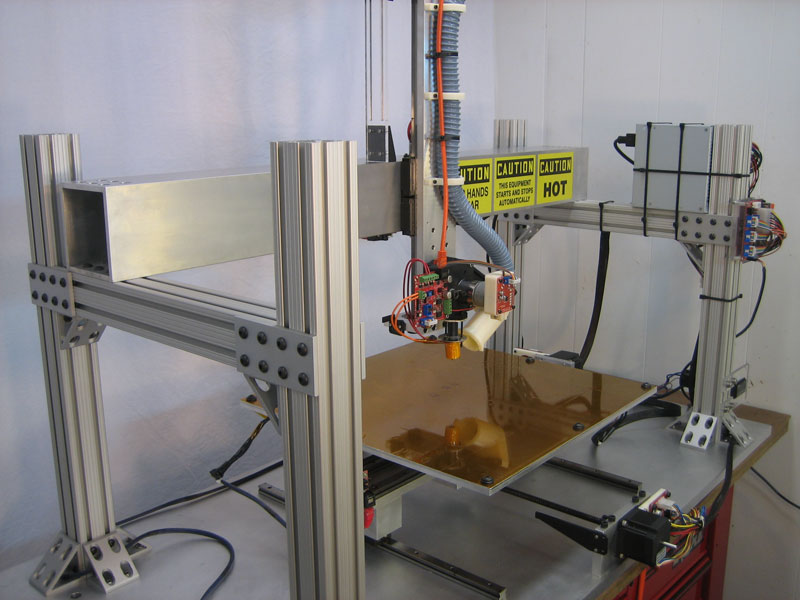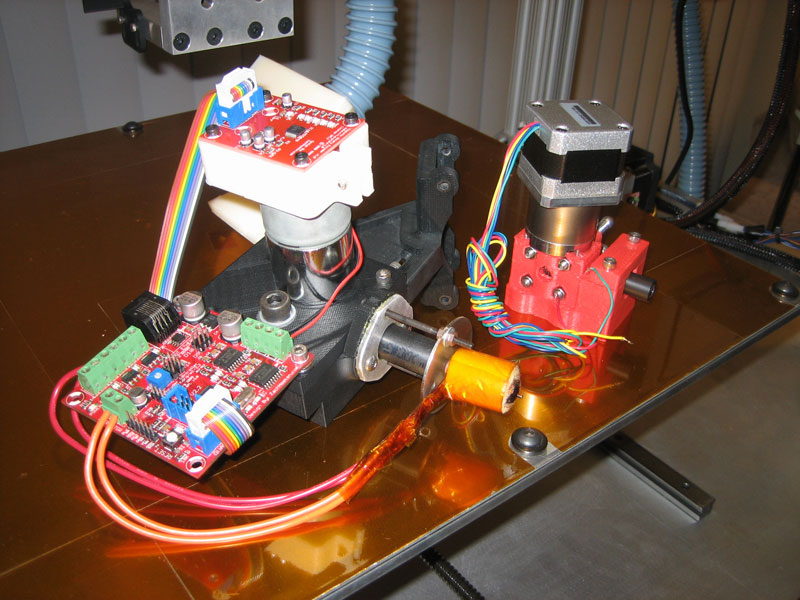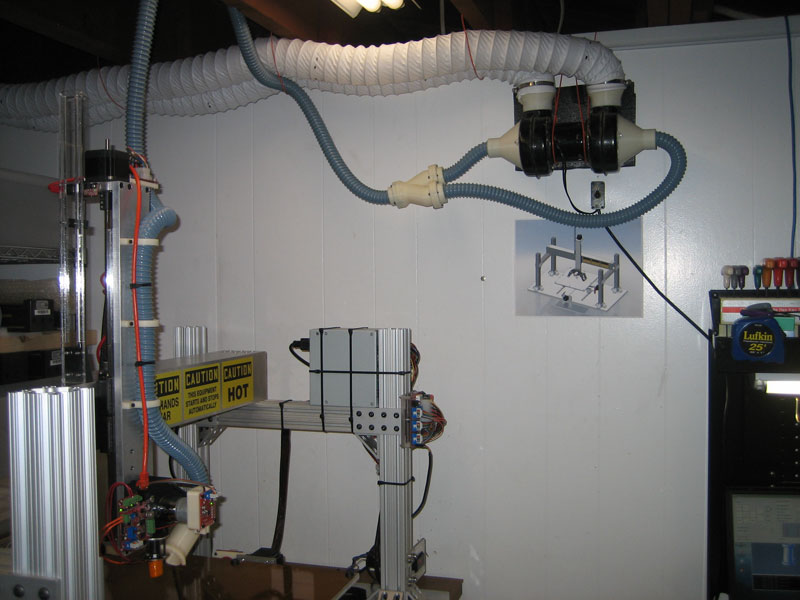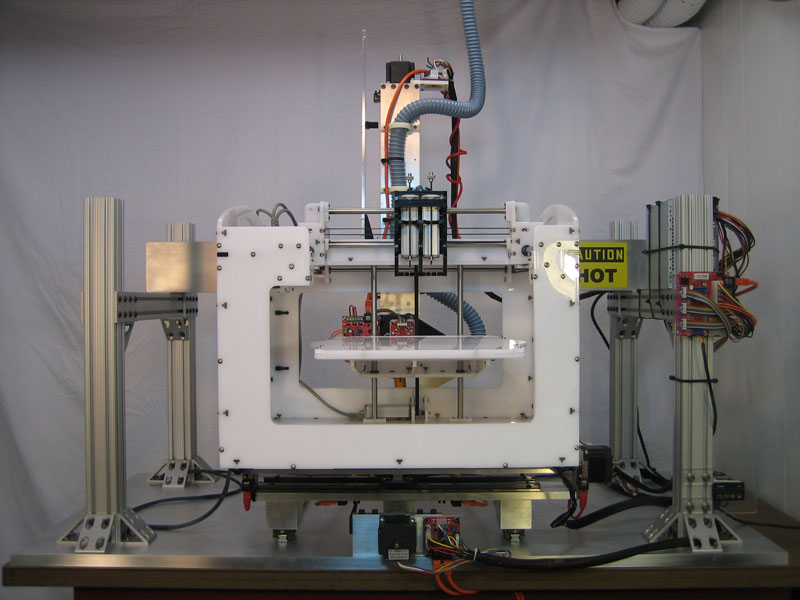
80/20 extrusion is used to support the Z axis. This is so the height of the Z axis can be varied depending on the tool and task. For example, if a rotary cutting tool head is attached to cut wood, the Z axis would ideally need to be located as close to the cutting surface as possible to reduce the moment on the axis.





